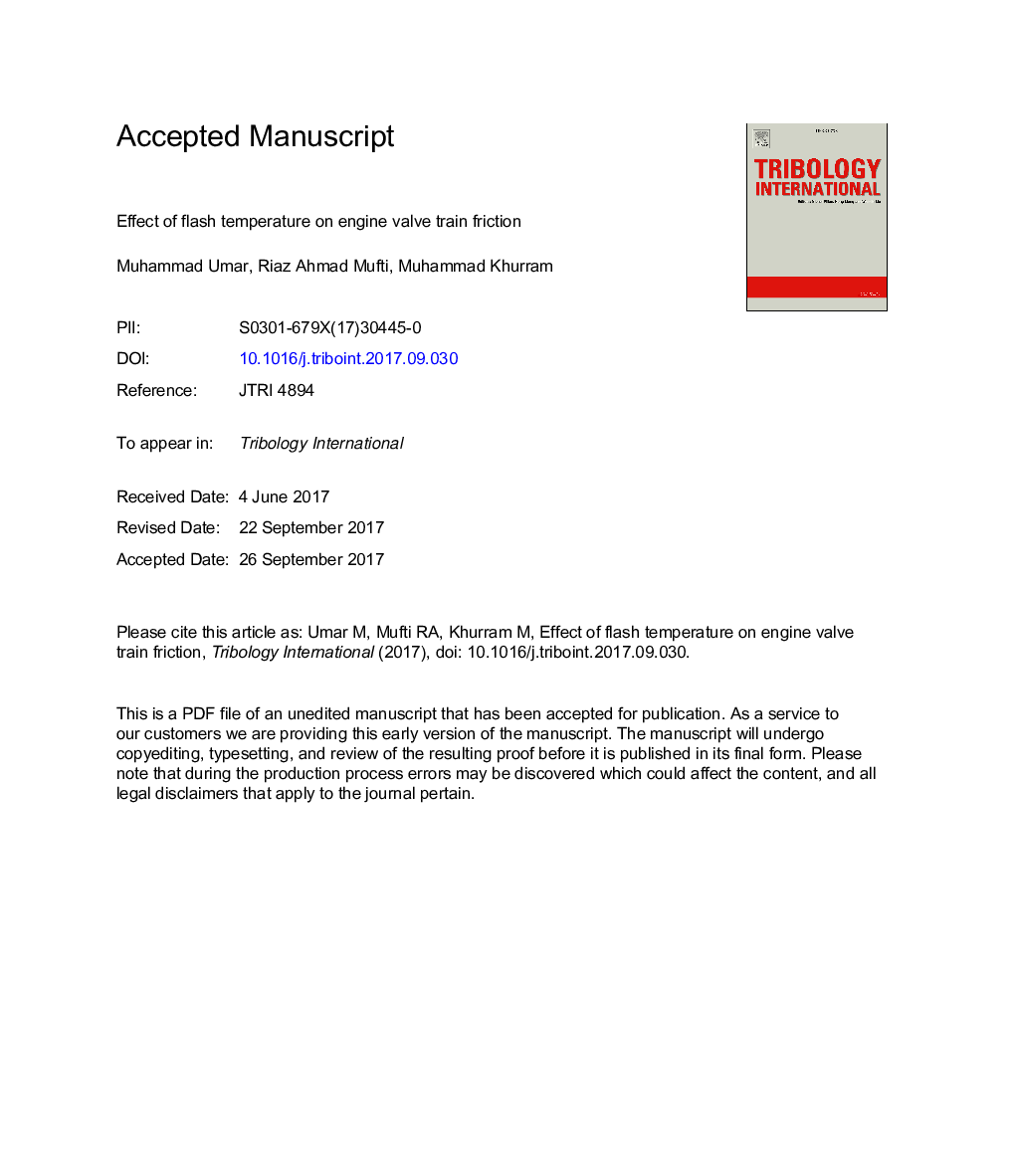| Article ID | Journal | Published Year | Pages | File Type |
|---|---|---|---|---|
| 7002323 | Tribology International | 2018 | 28 Pages |
Abstract
This paper describes the development of a numerical approach based on friction and lubrication analysis to predict the flash temperature and its effects on friction at cam/follower interface. Simulation results showed that the rise in flash temperature resulted in decrease of friction and oil film thickness at cam/tappet contact particularly at high camshaft operating speeds. The flash temperature for direct acting valve train was found significantly higher than roller follower configuration due to higher sliding velocity and friction force. In direct acting valve train, the temperature of lubricant approached the fire point of lubricant and may lead to failure of oil film thereby promoting scuffing and polish wear of tribological components.
Keywords
Related Topics
Physical Sciences and Engineering
Chemical Engineering
Colloid and Surface Chemistry
Authors
Muhammad Umar, Riaz Ahmad Mufti, Muhammad Khurram,
